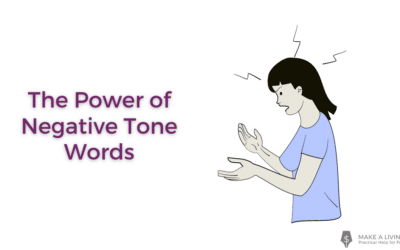Finding and dusting off my tattered, circa 1990 AP Stylebook was the first smart thing I did when I took the plunge into blog writing. I needed a crash crash course on writing tips to get back in the game.
I have a journalism degree and news writing experience, but had given up that career in the early 2000s to run the family farm.
My writing skills were rusty. I had traded in my reporter’s notebook for seed sowing, lettuce planting and tractor driving.
And it had been a while since I devoted a lot of brain power to writing tips and style to create great content.
But I knew, though it had been a long time since I had written for a living, as long as I had my AP Stylebook it would be okay.
When I made my way back to journalism and started freelancing, the writing tips I gleaned from the AP Stylebook reminded me this resource can help you a lot.
Ready to level up your blog posts, engage readers, and keep your clients coming back for more?
Check out these writing tips from the AP Stylebook.
Writing is like learning to ride a bicycle
You might get rusty, but you never forget. When I got back into journalism, I needed a writing tips tune-up and my AP Stylebook was my ‘learner’s manual.’
What I hadn’t realized was it would also make my blog-writing skills more marketable for paying clients.
For good reason, the AP Stylebook is called the:
“Journalist’s Bible.”
It is a 600-plus page handbook of commonly-accepted written language and grammar rules for working journalists, and it’s packed with writing tips…
Plus, factual information on modern subjects many writers stumble across in their daily work, like:
- Wondering when it’s who versus whom?
- Whether you should use ax or ax(e)?
- How to properly format a quote?
- Why Kitty Litter should be capitalized?
- What an adjustable-rate mortgage is?
The AP Stylebook covers it all, and then some.
But as I started flexing my writing muscles again, I discovered my AP Stylebook was my secret ticket to better blog clients.
- The vast majority of blog readers are used to reading daily news and journalists follow the AP Style rules.
- Writing blog posts using AP Style rules readers are already familiar with (even if they don’t know it) equals better performing posts and happy clients.
My AP Stylebook quickly became my favorite tool for writing tips and fine-tuning my blog posts into the ultimate goal-people read them!
Here are my top AP Style writing tips…
1. Acronyms on first reference…yeah or nay?
Only use first-reference acronyms readers will commonly know.
The CIA, FDA and IRS are okay, but not NSA, the National Security Agency.
Not sure if the acronym you’re using is common enough?
No problem, look it up in your AP Stylebook. If you can’t find it, that means write it out.
2. Create authority with attribution
Many blog posts don’t offer any attribution (or provide sources) to back up their claims.
- Check with your client first. Attribution is a powerful tool for turning a blog post from a casual conversation to a trust-worthy and authoritative source of information.
3. Capitalization quirks
There’s plenty to be said about capitalization and the AP Stylebook has all the quick and dirty guides, including:
- Proper names
- Nouns
- Titles
Plus, a few that throw writers for a loop, like popular names…
It’s the South Side (of Chicago) not the south side (of Chicago).
4. Clichés are for the birds
I love a well-turned cliché as much as the next writer, but as the AP Stylebook says:
“Clichés are the junk food of the literary pantry, much loved by lazy writers.”
Ouch. That hurts a little. But the point is well made.
Writing tips: Watch your clichés, or you might turn into one.
5. Colloquialism ain’t gonna work every time
For blog and copywriters’ colloquialisms like “gonna” have their place in casual, voice-of-the-reader writing.
But, there’s a fine line between connecting with your reader and coming off as illiterate.
Plus, many colloquialisms like “ain’t,” are pejoratives and can turn into confusing sentence structure.
- It’s easy to use colloquialisms too aggressively or as a lazy answer for a casual voice.
- If the writing is so annoyingly informal it’s noticeable, the whole point of a casual writing voice has been lost, right?
Writing tips: Grammar rules are meant to be broken, but as the AP Stylebook points out, don’t go getting too cute with colloquialisms.
6. Proper company names for search results
The AP Stylebook reminds us to include the full company name in the story for search results, even if your first reference is the informal name.
Costco is okay for a first reference but somewhere use the full name Costco Wholesale Corp.
Writing tips: If “The” is part of the formal name, use it. Use all-capital-names only when the letters are individually pronounced, like BMW, but not in a word. Ikea, not IKEA.
7. Just stop the comma confusion
The AP Stylebook has a separate punctuation guide including all those head-scratchers like when to use an apostrophe.
But when it comes down to commas (aka the Oxford comma debate), the Stylebook addresses it succinctly:
“If a comma does not make clear what is being said, it should not be there.”
Enough said.
8. Dastardly dang dashes
I nearly lost my mind one night trying to figure out:
- em-dashes (the long one)
- en-dashes (the short one)
- hyphens (even shorter ones)
I finally gave up on Google and picked up my AP Stylebook and reminded myself why this wasn’t such a big deal when I was a working journalist.
The Stylebook simplifies the dash dilemma in 3 ways:
- The news industry never adopted the en-dash
- Use a hyphen as a joiner between compound modifiers (e.g., a small-business owner)
- Use the em-dash to set off a series in a phrase and pretty much everything else – including author attribution.
Stop stressing and wasting time over this, OK?
9. Navigating gender and sexuality with class and readability
The AP Stylebook has an extensive section on gender and sexuality topics relevant to all writers. It’s worth a comprehensive look.
A few big takeaways and writing tips on these topics include:
- Gender identify. Don’t presume maleness in your sentence structure with a default he/him/his.
- Gender neutral. When a person identifies as neither male nor female, avoid using they/them/their…unless essential. Why? It creates reader confusion. Replace with their name instead.
10. Names are easy, most of the time
On the first reference, use a full name. Whatever the source prefers.
Ahem…if you don’t know you should ask…or at least look it up.
On subsequent references, use only their last name.
Writing tips: If you’re writing about two people with the same last name, use first and last names for all references.
11. Too many numeral exceptions to count
I think I could spend the entire blog post on AP Style here. Numbers come up a lot in content. And you need a universal way to serve this kind of data to readers.
The writing tips in the AP Style guide do a good job giving you parameters to follow. The big one…
- Spell out one through nine, but 10 or above use numerals. Except at the beginning of a sentence. Twenty-one of the new products versus Out of 21 new products.
But, there is a long list of exceptions for the one through nine rule, including:
- Addresses
- Ages
- Numeric name designations (B-52 bomber)
- Dates
- Years and decades
- Distances
- Rank
- And a bunch of others.
Writing tips: If you’re feeling confused, no worries, the AP Stylebook explains it all. This section of my new AP Stylebook is already well loved!
12. Percent, percentage and percentage points
In casual reference, spell out PERCENT…
He had a zero percent chance.
Use percentage versus percent when not paired with a number…
The percentage of votes cast is increasing.
But use the percent symbol when associated with a number…
He had 10% of his work done.
And, when you use a percent at the beginning of a sentence, it should be spelled out, numbers and the percent symbol itself.
Ten percent of his work was done.
13. Quotations made easy
If you aren’t a journalism graduate, using expert quotes in a piece can be intimidating and gets messy quick.
Writing tips: The Stylebook has an excellent summary of when to – and when not to -use quotations.
Bottom line…
“Use quotations only if they are the best way to tell the story or convey meaning. Often, paraphrasing is preferable.”
14. Avoid terribly boring titles
Titles are important, but annoyingly formal, in business-blog writing in particular.
This AP Stylebook rule works well to solve that problem…
- Lowercase and spell out titles in construction that set them apart.
The chief of police, Tim Jones. Or, Tim Jones, chief of police.
Find an AP Stylebook near you
You can sign up for an online AP Stylebook account-some prefer that so they are always up to date with current revisions-or order a hardcopy.
I got my new version for just $16.99 and prefer the comfort of having a book in hand rather than one more tab open on my beleaguered computer screen.
It’s also fun light reading for writing trivia hounds. For example…
Did you know the S in Harry S. Truman doesn’t stand for anything?
So why is it always written with a period after the initial?
When asked his preference in the early 1960s Truman said, “It makes no difference to me.”
The AP Stylebook ruled it would be written with a period and since then, it has always been Harry S. Truman not Harry S Truman.
The AP Stylebook has spoken.
What writing tips do you need help with? Let’s discuss in the comments below.
Georgie Smith is a freelance agricultural and food writer. She writes content for agricultural businesses, farm-focused food brands and organizations.












